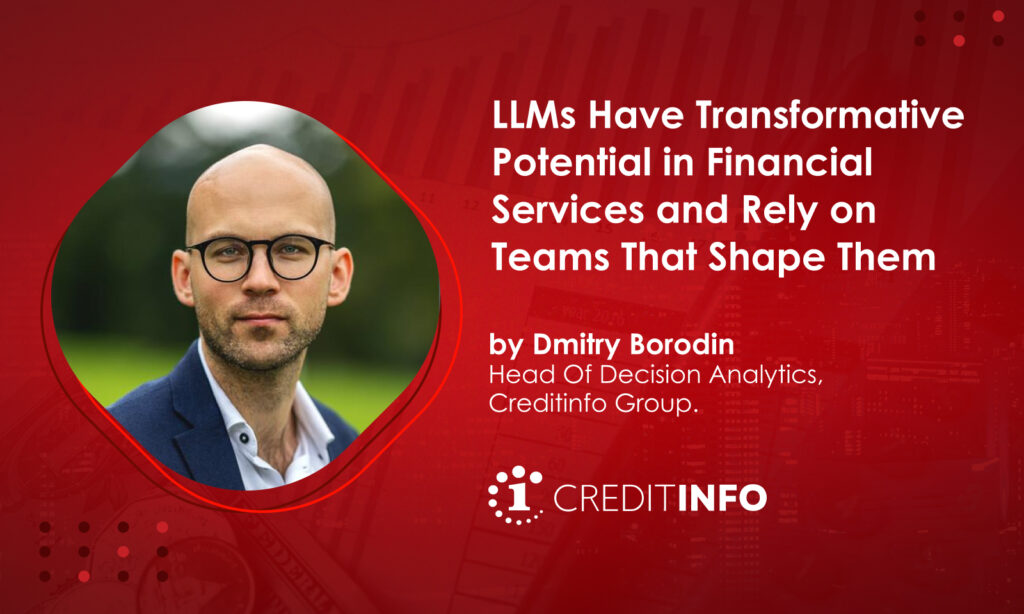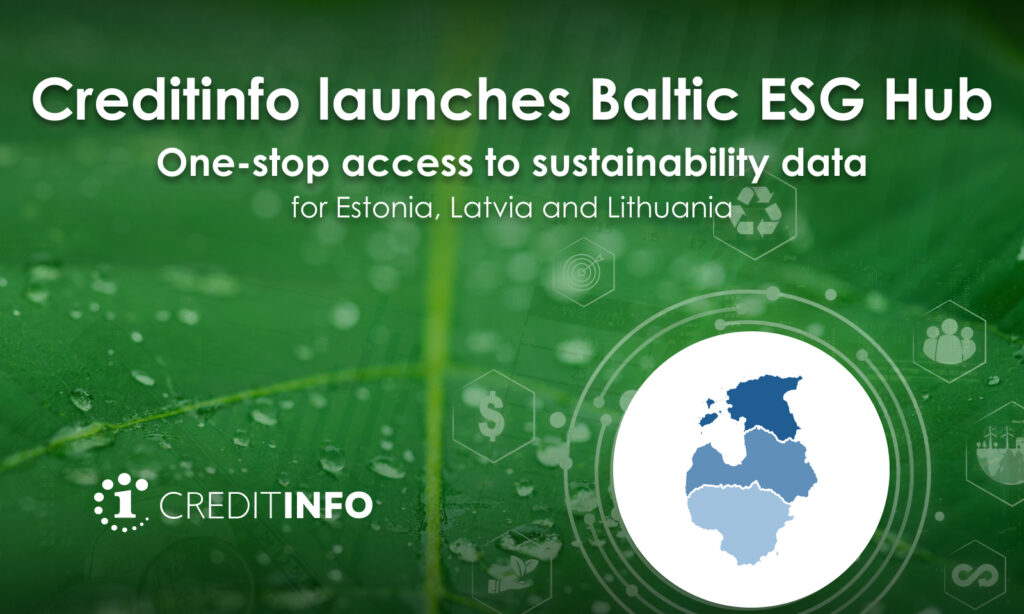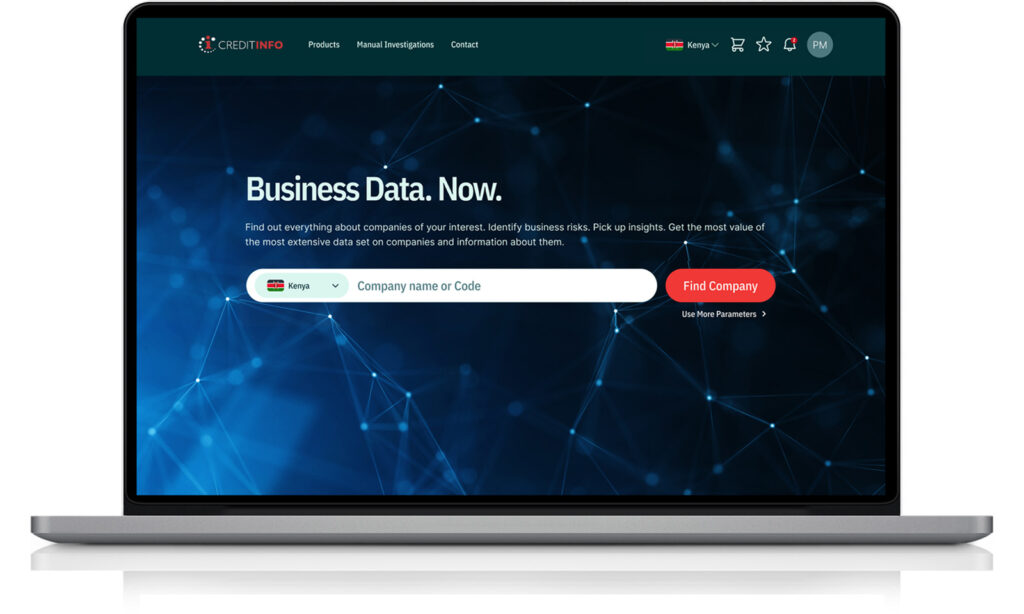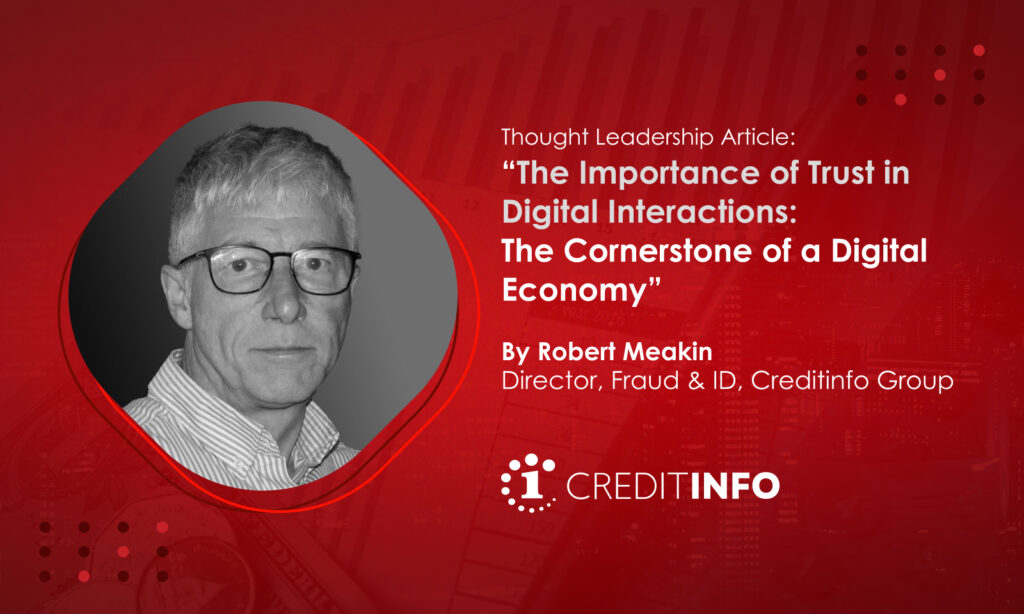LLMs Have Transformative Potential in Financial Services and Rely on Teams That Shape Them

Large language models (LLMs) are disrupting established industries and creating new business opportunities. They can also bring significant value to financial institutions.
While most early implementations have focused on client-facing applications like onboarding, call-center automation and digital assistants, much of LLMs’ potential lies in operational functions. For example, they can:
- Enhance model management by creating model documentation, explaining complex models in plain language and assisting in model validation workflows.
- Boost anomaly detection enabling faster escalation and resolution by human teams.
- Support audit and compliance activities by summarizing model behavior, identifying compliance gaps and documenting evidence for regulators.
- Enhance internal knowledge management by helping staff quickly retrieve information from documents.
These behind-the-scenes applications drive efficiency and free up human teams to focus on strategic decision-making and higher-value tasks. Successful adopters are able to unlock such synergies.
Human-LLM Collaboration
More broadly, human-AI collaboration in finance is evolving. It has become clear that human strengths, such as empathy, judgment and contextual understanding, are critical for high-stakes interactions and that fully autonomous systems still face limitations in certain client-facing roles.
Therefore, financial institutions should focus on building systems allowing AI to enhance, rather than replace human work and allow staff to remain at the center of complex decisions and client relationships. For example:
- Analysts can use LLMs to draft credit assessments, which experts then finalize.
- Compliance officers can use AI to flag suspicious transactions, which are then reviewed by humans applying their expertise and contextual knowledge before escalation.
- Advisors can leverage AI to brainstorm investment strategies, but then deliver advice with empathy and consideration of their clients’ circumstances.
Responsible Rollout
To stay ahead and fully leverage the potential of LLMs while balancing innovation with regulatory requirements, financial institutions should adopt a phased, risk-based approach starting with low-risk, high-value use cases in controlled environments.
As part of this, regular testing in sandbox environments is essential to refine models before wider deployment. Benchmarking LLM outputs against traditional, well-understood models adds another layer of interpretability and reliability. Equally important is continuous human oversight, particularly for impactful decisions where trust, accountability and transparency are necessary.
Looking ahead, institutions must invest in both infrastructure and talent to leverage LLMs responsibly. Scalable computation environments are needed to support LLM training and secure data pipelines are vital for compliant and well-governed data processing. But infrastructure alone is not enough. Success with LLMs will depend on the people behind them. The right mix of machine learning engineers, risk and domain experts, and legal professionals who specialize in AI regulation is needed.
LLMs in financial services are still at an early stage, but with the right mix of technology, processes and talent working toward a shared vision for AI, LLMs can deliver significant value both in and beyond client-facing roles without introducing unnecessary risk.
Creditinfo Launches ESG Hub to Fast-track Baltic Companies’ Access to Reliable Sustainability Data

New one-stop-shop solution aggregates information from more than 20 external sources, helping banks and businesses boost their ESG strategies, manage risk, and streamline their supply-chain transparency.
Creditinfo unveiled ESG Hub, the Baltic region’s first pan-regional platform that gives lenders and businesses instant, standardised access to the environmental, social and governance (ESG) data they need to comply with regulations, assess counterparties and execute sustainability strategies.
Building on Creditinfo’s long track-record of turning complex business information into accessible actionable insight, ESG Hub consolidates data from 20-plus public and proprietary data sources from Estonia, Latvia and Lithuania into one standardised API feed and ready-to-use report. By merging country-specific registries into a single, harmonised view, the platform lets banks and businesses manage ESG data uniformly across all three markets. Users can pull company-level metrics—from carbon emissions and energy intensity to board diversity and community impact—within seconds, eliminating the need to piece together separate national datasets manually.
“We want to accelerate the sustainability journey for the Baltic economies, and it all starts with easy access to trusted information. Until now, assembling ESG data has been difficult and time-consuming; companies have spent substantial time on these tasks, and the process has been inefficient,” said Elari Tammenurm, Regional Director, Continental Europe at Creditinfo. “With ESG Hub, any financial institution or company can integrate harmonised data directly into their existing workflows, cutting cost and complexity while improving decision speed.”
Proven model, now scaled to the Baltics
Creditinfo first introduced an ESG data service in Iceland in 2023; rapid adoption by local banks and corporates highlighted the growing importance of reliable sustainability intelligence. “The strong uptake we saw in Iceland showed us how big the need is,” noted Reynir Smári Atlason, Managing Director of Sustainability at Creditinfo. “We’re now bringing those learnings, and a richer dataset, to the Baltic markets.”
The company will continue to expand ESG Hub’s data source coverage and analytical modules over the coming months. Future roll-outs in additional Creditinfo markets are also planned.
For more information visit ESG Hub
Creditinfo & Little App Partner To Enhance financial Inclusion In Kenya

Little App’s new feature gives individuals and businesses instant, on-the-go access to their credit information
Nairobi, 18th June 2025 – Creditinfo, a global service provider for credit information and risk management solutions, has partnered with Little App, one of Africa’s most forward-thinking super apps, to enable Little App users to access their credit reports and monitor their credit scores instantly and securely within the app’s Financial Services section.
With the integration of Creditinfo’s credit bureau data into the app, individuals and businesses can conveniently view their credit information through their mobile devices. Whether applying for a loan, improving creditworthiness, or monitoring one’s financial health, this new feature makes it simple, fast, and user-friendly. Having this information available in one place will help people in Kenya to take control of their finances, make more informed decisions, and access credit with confidence.
“Our partnership with Little reflects more than just a shared goal; it’s a concrete step toward increasing financial inclusion and transparency across Kenya and the African region in the foreseeable future. Data is key to unlocking financial opportunity for people, and our priority is to make access to real-time, reliable credit information simpler and more intuitive. We’re immensely proud to deliver a solution that brings tangible benefits to people’s financial journeys,” said Kamau Kunyiha, Regional CEO East and Southern Africa at Creditinfo.
Kamal Budhabhatti, CEO at Little said: “Africa is undergoing a remarkable digital evolution, with mobile technology transforming how people live and engage with services. Through our collaboration with Creditinfo, we’ve built a solution that meets people where they are – on their phones – and fits seamlessly into their daily lives. We want to demystify complex financial data for everyone, empowering users to make informed decisions while driving lasting social and economic impact.”
-END-
About Creditinfo
Established in 1997 and headquartered in London, UK, Creditinfo is a provider of credit information and risk management solutions worldwide. As one of the fastest-growing companies in its field, Creditinfo facilitates access to finance, through intelligent information, software and decision analytics solutions.
With more than 30 credit bureaus running today, Creditinfo has the most considerable global presence in this field of credit risk management, with a significantly greater footprint than competitors. For decades it has provided business information, risk management and credit bureau solutions to some of the largest, lenders, governments and central banks globally to increase financial inclusion and generate economic growth by allowing credit access for SMEs and individuals.
For more information, please visit www.creditinfo.com
About Little
Little App is a pan-African super app that has been transforming everyday experiences since 2016. With nearly a decade of innovation, Little offers a wide range of tech-driven solutions across mobility, payments, delivery, healthcare, and lifestyle services.
Operating in multiple African countries, Little serves both individual users and organizations—delivering convenience, affordability, and efficiency. From ride-hailing to enterprise transport solutions and digital wallets, Little is at the forefront of enabling digital and financial inclusion across the continent.
For more information, please visit www.little.bz
Creditinfo launches new platform to boost African businesses’ access to credit and global opportunities

Creditinfo’s Business Information Platform Africa aims to strengthen local economies and foster global partnerships
London – 14 May 2025 – Creditinfo has today announced the launch of Business Information Platform Africa (BI Africa) to help African businesses and financial services access trade credit more easily and build stronger relationships with global partners. The platform will be rolled out in Kenya in June, with more markets to follow.
The move builds on Creditinfo’s success in the Baltics, where its business information tools have helped companies navigate partnerships and manage risk for over a decade. Now, that same model is being brought to Africa – starting with Kenya – where access to verified, independent business data has often been a challenge.
‘This launch isn’t just about data. It’s about unlocking opportunity,’ said Satrajit Saha, CEO at Creditinfo. ‘When businesses have the right information at their fingertips, they can make smarter, faster decisions that drive growth, close more deals and build lasting confidence – both locally and globally.’
The BI Africa platform offers reports on over one million African companies, presented in a simple, globally standardised format. Users can check key facts about potential partners or customers, everything from credit health to company history, making it easier to assess risk and build trust. Additionally, as an added service, Kenyan businesses will have access to company reports on over 430 million international companies – empowering them to confidently verify both new and existing clients through Creditinfo and its network of global partners.
‘We want to make it easier for African businesses to prove their value, compete globally, and grow with confidence,’ added Saha. ‘Greater transparency leads to stronger trust and improved access to finance – benefits that extend across economies and communities. And that’s a win for everyone.’
It also includes a Manual Investigation Service for those who need deeper insight. Users can request tailored research into specific companies, providing information that goes beyond the numbers, like ownership structures, litigation history, or up-to-date financials. Crucially, the platform isn’t just for large institutions. It’s been designed to support SMEs and individual entrepreneurs, too – those who often struggle the most with gaining access to trade credit.
‘By bridging critical trust and information gaps, our robust platform will redefine what is possible for businesses, of all sizes, in Kenya and beyond. What once took three to five working days to verify a potential business partner can now happen in seconds, without compromising on regulatory compliance. That’s a game-changer for companies, particularly in the SME sector, who need to make quick decisions in competitive markets,’ said Kamau Kunyiha, Regional CEO East and Southern Africa at Creditinfo.
-END-
About Creditinfo
Established in 1997 and headquartered in London, UK, Creditinfo is a provider of credit information and risk management solutions worldwide. As one of the fastest-growing companies in its field, Creditinfo facilitates access to finance, through intelligent information, software and decision analytics solutions.
With more than 30 credit bureaus running today, Creditinfo has the most considerable global presence in this field of credit risk management, with a significantly greater footprint than competitors. For decades it has provided business information, risk management and credit bureau solutions to some of the largest, lenders, governments and central banks globally to increase financial inclusion and generate economic growth by allowing credit access for SMEs and individuals.
For more information, please visit www.creditinfo.com
The Importance of Trust in Digital Interactions: The Cornerstone of a Digital Economy

There’s a diversity in maturity in digitization across the globe – from markets that are almost universally digital, through markets with developing digital economies, to markets with embryonic digital ecosystems. Mature economies typically have more mature controls but remain attractive to fraudsters because of the scale of opportunity – emerging digital economies typically have less robust ecosystems and are attractive because of the inherent vulnerabilities in the controls – with a promise for future growth.
The anonymity and distance that digital platforms afford make it easier for fraudsters to operate undetected.
For bad actors, the business model is scalable – in a digital economy the unique skills of Frank Abagnale Jr (of “Catch Me If You Can” fame) become redundant. The ready availability of personal data through vast data breaches and social engineering, and online access to digital channels present an attractive proposition for the enterprising fraudster.
In fact, cybercrime has risen dramatically alongside digital transformation, with fraud rates increasing globally – and we’re increasingly seeing collaboration between cybercrime, fraud, organised crime and money laundering. Organizations face mounting challenges in protecting their digital infrastructure and customers from fraudulent activities. From identity theft to financial scams, fraudsters are leveraging a wide array of tactics to deceive individuals and organizations.
The digital economy’s vulnerability to fraud presents significant risks, not only for organizations, but also for consumers. When fraud occurs, it undermines the trust that is essential to the functioning of the digital economy. If consumers and businesses cannot trust the digital services they engage with, it will slow adoption, hinder growth, and damage reputations. Therefore, mitigating fraud risk is not just about protecting individual interactions – it’s about maintaining the integrity of the entire digital ecosystem.
The importance of trust in digital interactions cannot be overstated. From e-commerce to financial services and beyond, trust is the foundation upon which all successful digital interactions are built. At the core of this trust is the concept of identity verification. In a world where interactions are increasingly conducted online, it’s critical to ensure the presented identity is a real-world identity, not synthetic – and that the individual presenting the identity is the owner of that identity.
The need to assert identity in digital engagements goes beyond basic security – it forms the bedrock of confidence that drives the entire online ecosystem. Whether consumers are signing up for a new banking service, purchasing products, or enrolling in educational courses, verifying the authenticity of their identity is paramount. Identity verification serves not only to protect individuals but also to secure businesses from fraudulent activities, which, in turn, strengthens the broader digital economy.
The Role of Identity Verification in Mitigating Fraud Risk
At the heart of reducing fraud risk lies robust identity verification. This process ensures that the individual engaging with a digital platform is who they claim to be. It is a crucial step that lays the groundwork for every subsequent transaction, providing a layer of protection for both consumers and businesses. Without reliable identity verification, any digital interaction is susceptible to being manipulated by malicious actors.
Identity verification can be achieved through a variety of techniques, including biometric verification, document verification, and multi-factor authentication. These methods allow businesses to verify that a person is genuine, providing them with the confidence to proceed with transactions. This, in turn, enables a safer and more reliable digital environment for everyone involved.
However, while basic identity verification is a critical first step, it is only part of the solution.
The Power of Layering Fraud Defences
In a digital economy, an identity is far more than a name, address, date of birth and national id number.
From basic digital identity attributes such as mobile numbers, email addresses and IP addresses, through payment attributes such as bank details and credit card numbers, through connected messaging apps and service accounts, through device attributes such as screen size, make, model, time zone, location, installed apps, through biometric attributes such as facial patterns, to behavioural attributes such as physical device interactions. A digital identity is an extensive and interconnected web of many attributes.
The real strength in mitigating fraud risk lies in combining multiple layers of defence – a multifaceted approach that examines not only the traditional identity attributes, but the wider digital footprint and the connections between attributes across the identity graph. Consistency and conformity to normalised patterns help establish greater trust – inconsistency and anomalous patterns indicate greater risk. Machine learning and artificial intelligence techniques are increasingly used to examine attribute patterns – generating increasingly performant models.
The power of a layered approach lies in managing the balance between making life difficult for bad actors and removing friction in genuine interactions. In a digital economy consumers become increasingly intolerant of any friction in their interactions with organisations. Where consumers encounter even minor friction, they will abandon the sales process and look for alternative providers – in a competitive market, the winners will be the businesses who deliver the easiest way to interact – but without appropriate fraud defences, success will be short lived.
More accurate multifaceted risk assessments can be implemented based lighter data capture, drawing insights from a broad range of sources, reducing CX friction and abandonment, readily securing greater trust, more accurately exposing risk.
Summary
As the digital landscape continues to evolve, organizations must prioritize trust as the cornerstone of their interactions with consumers. Robust identity verification and a layered approach to fraud prevention are not just best practices – they are essential for maintaining the integrity of the digital economy. By effectively combining multiple layers of defence, businesses can balance security with convenience, reducing fraud risk without sacrificing customer experience. In the end, fostering trust in digital engagements is the key to enabling sustained growth and success in an increasingly complex and competitive online ecosystem.
For more information, please visit: www.creditinfo.com
or email info@creditinfo.com
Author : Robert Meakin – Director, Fraud & ID, Creditinfo Group
Lithuanian Paper Industry: Revenue Growth, Debt Increase & Decreasing Risk

Challenges from a Few Companies Distort the Overall Picture
An analysis by Creditinfo Lietuva reveals a controversial situation in Lithuania’s paper manufacturing sector. While the number of companies has decreased in recent years, the number of employees has grown. In 2023, sector revenues reached €829 million—a 51% increase compared to the beginning of 2021. However, there are worrying signs: the sector’s debt portfolio has grown nearly fivefold over four years. This negative trend is primarily driven by the difficulties of a few companies, while the sector itself demonstrates resilience. No bankruptcies have been recorded in the past three years, and the risk levels are nearly twice as low as the national business risk average.
Current State of the Sector
According to Creditinfo Lietuva, there are currently 176 companies operating in the Lithuanian paper manufacturing sector, employing 5,462 people. While the number of companies has gradually decreased from 191 in 2021 to 176 in November 2024, employee numbers have grown steadily, from 5,022 in January 2021 to 5,462 in November 2024.
Economic Indicators: Positive and Negative Trends In 2023, total sector revenues reached €829 million—4.6% less than at the start of the year (€869 million), but 21% higher than in 2022 (€684.6 million) and 51% higher than in 2021 (€548 million). Over a four-year period, average annual revenues per company increased from €4.2 million to €6.1 million.
The paper manufacturing sector includes companies producing pulp, paper, and cardboard, as well as corrugated paper and cardboard packaging, hygiene and household products, stationery, copy paper, envelopes, wallpapers, and other specialized products.
Debt Portfolio Increased
Fivefold At first glance, the sector has seen a significant increase in overdue financial obligations. Between 2021 and the end of 2024, the debt portfolio grew nearly fivefold, from €157.7K to €776.6K, while the number of debts increased only slightly, from 87 to 89 cases.
“A deeper analysis shows that the overall figures are skewed by issues faced by a few companies—one undergoing restructuring and another involved in legal proceedings. Excluding these, the sector remains stable, with the average debt amount per case decreasing from €2,999 in early 2024 to €2,803,” says Dovilė Krikščiukaitė, Head of Legal at Creditinfo Lietuva.
Bankruptcy Trends
From 2003 to the end of 2024, the paper manufacturing sector recorded 30 bankruptcies. However, insolvency cases have varied across periods. For instance, no bankruptcies occurred between 2022 and 2024 or from 2014 to 2015, while 2009–2010 saw 5 and 4 bankruptcies, respectively.
Risk Levels: Lower Than Other Sectors
Analyzing risk trends between 2022 and 2024, the paper manufacturing sector shows positive stabilization. Currently, 8% of companies are classified as high-risk for late
payments, and 5% are at high risk of bankruptcy. This means over 90% of companies are considered low- or medium-risk. In comparison, the national average bankruptcy risk is 9%, with 16% of companies at risk of payment delays.
“Aside from a few exceptions, Lithuanian paper manufacturers are relatively low risk. Compared to other sectors, this positions them as a stable part of the economy,” adds Krikščiukaitė.
Top Companies by Revenue and Employment
The top 10 Lithuanian paper manufacturers by revenue in 2023 are:
1. Nemuno banga (€178.2M)
2. Aurika (€70.3M)
3. DS Smith Packaging Lithuania (€59.4M)
4. Grigeo Klaipėda (€45.8M)
5. Grigeo Packaging (€36.4M)
6. Rietuva (€32.99M)
7. Pakmarkas (€27.1M)
8. Bigso (€24.9M)
9. Miko ir Tado leidykla (€24.3M)
10. Klaipėdos kartono tara (€23.8M)
Top employers in the sector include:
1. Nemuno banga (580 employees)
2. Aurika (481 employees)
3. Bigso (324 employees)
4. Grigeo Tissue (244 employees)
5. DS Smith Packaging Lithuania (214 employees)
Creditinfo appoints TransUnion veteran as new Global Chief Commercial Officer

Seasoned commercial leader, John Cannon, looks to use wealth of financial and executive leadership experience in new role to unlock new value for customers and drive Creditinfo’s international growth
London – 18 April 2024: Creditinfo, a global service provider for credit information and risk management solutions, has today announced the appointment of John Cannon as its Global Chief Commercial Officer (CCO). With over 25 years of experience in finance and credit bureaus, John will spearhead the strategy and execution behind Creditinfo’s solutions and products for all 30 of its credit bureaus, which are spread across 50 different countries.
John brings almost three decades of experience in leading top-performing teams, delivering pioneering solutions, and galvanising high-value market leading companies within the global financial community. A reputable industry expert, John led Transunion’s GFS business for international regions and has spent the last couple of years as an advisor to Private Equity firms in addition to helping scale early stage technology companies, most recently Xapien.
As CCO of Creditinfo, John will draw on his extensive sector knowledge and experience to leverage Creditinfo’s technology and data to push innovation forward and ensure it meets customer expectations and needs. He will play a key part in promoting financial inclusion globally and in doing so bolster Creditinfo’s international growth. In his new role, John will also be responsible for delivering the right products and services to Creditinfo’s customers to maximise value, as well as identifying new business opportunities.
John Cannon, newly appointed Global Chief Commercial Officer at Creditinfo said: “I’m delighted to join Creditinfo, a company that is committed to enriching people’s lives through unlocking access to financial inclusion. This, and its international culture, is what drew me to the company. I look forward to working with the remarkable Creditinfo team to support the next phase of its growth journey.”
Satrajit Saha, Global CEO at Creditinfo said: “With firm roots in the global financial industry and a strong track record as a senior executive leader, John is an excellent addition to our senior leadership team. As we look to expand our global footprint and facilitate access to finance for millions of consumers and businesses worldwide, having John on board is a huge advantage, not only for our own innovation and growth but also for our customers as they turn to us to provide worldclass and transformative solutions and products.”
John will report directly to Satrajit Saha, Creditinfo’s Global CEO.
-END-
About Creditinfo
Established in 1997 and headquartered in London, UK, Creditinfo is a provider of credit information and risk management solutions worldwide. As one of the fastest-growing companies in its field, Creditinfo facilitates access to finance, through intelligent information, software and decision analytics solutions.
With more than 30 credit bureaus running today, Creditinfo has the most considerable global presence in this field of credit risk management, with a significantly greater footprint than competitors. For decades it has provided business information, risk management and credit bureau solutions to some of the largest, lenders, governments and central banks globally to increase financial inclusion and generate economic growth by allowing credit access for SMEs and individuals.
For more information, please visit www.creditinfo.com
Access to customer bank transaction data provides a basis for more intelligent business decisions

In 2021, Creditinfo Estonia received permission from the Financial Supervision Authority to start offering account information services in Estonia, which later expanded to the markets of Latvia and Lithuania. Today, they have been offering the account information service on the market for almost two years. The PSD2 directive regulates the account information service, that grants account information service provider (Creditinfo) access to the transaction data of end-customers of banks and financial institutions, using a secure data transmission channel and customer consent.
Intelligent business decisions can only be made when decision-makers have enough information when making the decision. Decisions made without comprehensive information may remain superficial or rely too much on intuition. A joint decision becomes smart by including relevant, up-to-date, appropriate and verified data for decision-making, analyzing it and drawing conclusions from it.
Companies that want to be competitive in the market and, at the same time, grow faster than the market must act consciously and operatively to take advantage of the exponentially increasing amount of data and to navigate the diverse data landscape. The word “action” means the application of well-thought-out multiple technologies, the careful selection of primary data and adaptation to large, innovative data sets that provide the company with necessary data inquiries and detail-specific analyses. The actions mentioned in the previous sentence are based on the data value chain – a framework for managing data from collection to decision-making.
Access to bank transaction data gives the financial sector and several other sectors an unlimited opportunity to use innovative data sets to improve their business processes. Data (including account data) collection, analysis, targeted use and data-driven decision-making directly relate to Creditinfo’s core business. Creditinfo has invested a lot of time and knowledge to ensure and support its customers in successfully using the account information data. Remember that the customer does not have to invest resources in implementing the necessary specific technologies and data analysis in addition to their core business to filter and acquire value from bank transaction data.
Creditinfo adds value to account data with information from other sources
Bank transaction data helps to make more intelligent and more informed decisions regarding the products, services and conditions offered to the end customer. Figuratively speaking, credit bureau data enlighten one corner of the room of a person’s financial behavior, and the information obtained from account transactions enlightens the other corner of the room of a person’s financial behaviour.
Account information, besides evaluating financial behavior, provides information about a person’s daily habits, experiences, preferences, hobbies and much more.
In summary, access to the data of the end customer’s bank transactions provides a foundation for making business decisions based on an even more extensive and significantly more diverse data set, in other words, making decisions even smarter. As a universal, comprehensive solution provider throughout the Baltics, Creditinfo is the only partner for its customers with access to credit bureau data, global KYC data, and bank account data.
Visit creditinfo.ee/en for more information.
Ivo Vallau
Open Banking Product Manager, Ceditinfo Estonia.
Creditinfo appoints Satrajit Saha as new Global CEO

Former CEO of TransUnion Europe – Satrajit Saha – brings his expertise to Creditinfo, planning to drive growth across its credit bureaus globally.
London – 29th November 2023: Creditinfo, a global service provider for credit information and risk management solutions, has today announced the appointment of Satrajit Saha as its Global Chief Executive Officer (CEO). With over 20 years of experience in banking and credit bureau, Satrajit will drive the growth of Creditinfo and the maturity of its credit bureaus globally. He joins the company from TransUnion Europe, where he held the position of CEO for the last five years.
In his role, Satrajit will lead Creditinfo in advancing its strategic initiatives, with a particular focus on promoting financial inclusion worldwide. Drawing on his rich background in the credit information industry, spread across Asia, Africa, and Europe, he will lead the next phase of Creditinfo’s growth on a global level as it strives to become a truly global bureau and the leader for facilitating access to finance in both developed and emerging markets.
As an experienced strategic leader, Satrajit has an impressive reputation in the financial services space. At TransUnion Europe, he led the board of all TransUnion’s European owned entities. Before joining TransUnion Europe, he was Chief Business Officer at TransUnion India, where he was responsible for crafting and executing TransUnion’s CIBIL’s market strategy. He was also Cards Head, Africa Region, at Barclays Bank.
Satrajit Saha, newly appointed Global CEO at Creditinfo said: “I am honored to take on the role of Global CEO at Creditinfo, a company that is at the forefront of promoting financial inclusion. Together with the talented team at Creditinfo, we will continue to leverage innovative data sets and solutions to bridge information gaps and create opportunities to facilitate access to finance for individuals and businesses globally.”
Monty Ismail, Director at Levine Leichtman Capital Partners and Creditinfo Group Board member said: “We are delighted to welcome Satrajit “Satty” Saha as our new Global Chief Executive Officer. He is an accomplished executive with successful leadership experience relevant to our business, including his time as CEO of TransUnion UK. Today marks the beginning of a new chapter for Creditinfo, and we are excited to see Satty, with extensive knowledge of our key markets, take over as CEO. We are looking forward to working with Satty in continuing to expand our global footprint and unlock access to finance for millions of consumers and businesses worldwide. On behalf of the Board of Directors, I would like to thank Paul Randall for his important contribution as CEO. He has been key to our success, and we are all grateful for his leadership and dedication.”
He will begin his new role as Creditinfo CEO on 1st January 2024 and will report directly to the Creditinfo Group Board.
-END-
About Creditinfo
Established in 1997 and headquartered in London, UK, Creditinfo is a provider of credit information and risk management solutions worldwide. As one of the fastest-growing companies in its field, Creditinfo facilitates access to finance, through intelligent information, software and decision analytics solutions.
With more than 30 credit bureaus running today, Creditinfo has the most considerable global presence in this field of credit risk management, with a significantly greater footprint than competitors. For decades it has provided business information, risk management and credit bureau solutions to some of the largest, lenders, governments and central banks globally to increase financial inclusion and generate economic growth by allowing credit access for SMEs and individuals.
For more information, please visit www.creditinfo.com
One in five construction companies on the brink of bankruptcy in Lithuania

As shown in a recent analysis of the construction sector conducted by Creditinfo Lietuva, almost a fifth (18%) of construction companies1 are currently on the brink of bankruptcy, while almost a third (31%) are at risk of defaulting on their payments. According to publicly available data2, construction companies, as a whole, exhibit shorter operating histories and offer lower wages compared to other sectors. Financial experts are therefore advising caution when engaging with construction firms.
There are currently 19,167 construction companies in Lithuania, employing almost 108,000 people. The numbers of construction companies and their employees have shown consistent growth since 2020. In 2020, there were 16,144 construction companies with an employee count of nearly 102,000. By 2021, the numbers had risen to 17,171 companies and over 102,000 employees, and at the beginning of 2022, the sector boasted 18,512 companies, employing in excess of 106,000 people.
The average age of a construction company CEO is about 46 years, with a striking 87.5% of these leaders being male. Compared to other sectors, construction companies have a comparatively shorter average lifespan in the market, standing at 10 years, in contrast to the national average of over 13 years.
Despite witnessing among the fastest growth in the current year, salaries for construction workers still lag behind the Lithuanian average. According to data from Sodra, construction worker wages surged by 22% year-on-year in the second quarter, reaching EUR 1,300 before tax (EUR 880 net), while the average earnings of full-time workers across Lithuania rose by 12.3% year-on-year, amounting to EUR 1,980 before tax.
The risk of bankruptcy among construction companies is twice as high as the national average
Currently, 18% of construction firms fall into the high and highest bankruptcy risk categories, compared to 20% at the beginning of this year and 19% at the beginning of 2022. The high and highest risk classes of late payment now account for 31% of construction companies, up from 37% at the beginning of 2023 and 34% at the beginning of last year.
For all companies in Lithuania, excluding the construction sector, 9% of all companies in the country were in the high and highest bankruptcy risk classes at the beginning of 2023, compared to 12% at the beginning of 2022. At the beginning of this year, 17% of all Lithuanian companies belonged to the high and highest risk classes of late payment, with 21% at the beginning of 2022.
“Although the construction sector has experienced a period of growth in recent years, it is particularly sensitive to borrowing conditions, fluctuations in demand and geopolitical changes. During the pandemic, builders experienced a boom in demand – with many people deciding to improve their homes – low energy prices and relatively cheap borrowing. Subsequently, the construction sector encountered a number of challenges stemming from disrupted supply chains and the need to withdraw from cooperation with sanctioned countries,” explains Ekaterina Rojaka, Head of Business Strategy and Development at Creditinfo Lithuania. “In recent months, with the European Central Bank raising its base interest rates, borrowing has become a more costly affair, reducing people’s ability to borrow, and homes built with credit have been slower to sell.”
This year, bankruptcy proceedings were initiated for 136 construction companies
Since 2007, a total of 44,256 construction companies have been declared bankrupt in Lithuania. The highest number of bankruptcies occurred in 2009 (445), 2016 (351) and 2017 (367). Only in 2007 was the number of bankruptcies below 100, with a total of 67. In Lithuania, 163 construction companies faced insolvency in 2020, 131 in 2021 and 237 in 2022. In the first 8 months of this year alone, 136 construction companies in Lithuania have declared bankruptcy.
As of the beginning of September this year, there were 11,512 construction company debts on record, collectively burdened with nearly EUR 90 million in debts, with 962 new debts registered in the first 8 months of the year, according to the credit bureau systems. The average size of a single debt is EUR 7,800.
“When entering into contracts with construction companies, it is advisable to pay more attention to their risk assessment and to clearly negotiate payment terms,” Rojaka commented.
According to data provided to the Centre of Registers, the top 10 construction companies with the highest revenues last year are: YIT Lietuva (EUR 140.6 million), AB Kauno Tiltai (EUR 134.4 million), Conres LT (EUR 100.1 million), Autokausta (EUR 83.2 million), Tetas (EUR 79 million), Staticus (EUR 75.9 million), Merko Statyba (EUR 70.4 million), Žilinskis ir Co (EUR 68.7 million) and INGUS (EUR 63.9 million).
Almost one-fifth (19%) of companies in this sector have not yet submitted their financial statements for 2022.
According to Rojaka, state orders and building modernisation programmes will support the construction sector’s activity in the near future, as demand for real estate slows down. However, falling demand has only a limited impact on the final prices of construction services, as cheaper building materials do not compensate for the sector’s rapidly rising wages, which account for more than a quarter of total construction costs. As a result, construction continues to become more expensive, with a 3.7% year-on-year increase in construction costs in July, with the fastest increase in building repair costs, which rose by 9.2%.
More information:
Jekaterina Rojaka, Head of Business Strategy and Development at Creditinfo Lithuania (jekaterina.rojaka@creditinfo.com)
Or visit: lt.creditinfo.com/en
Notes:
1 In this report, construction companies are defined as companies that have publicly declared to the State Data Agency (SDA) the activity codes of Section F (41-43) of NACE2 as the company’s main activity.
2 The data in this press release is based on information publicly provided by the State Enterprise Centre of Registers, SODRA, the State Data Agency (VDA), and other sources.




